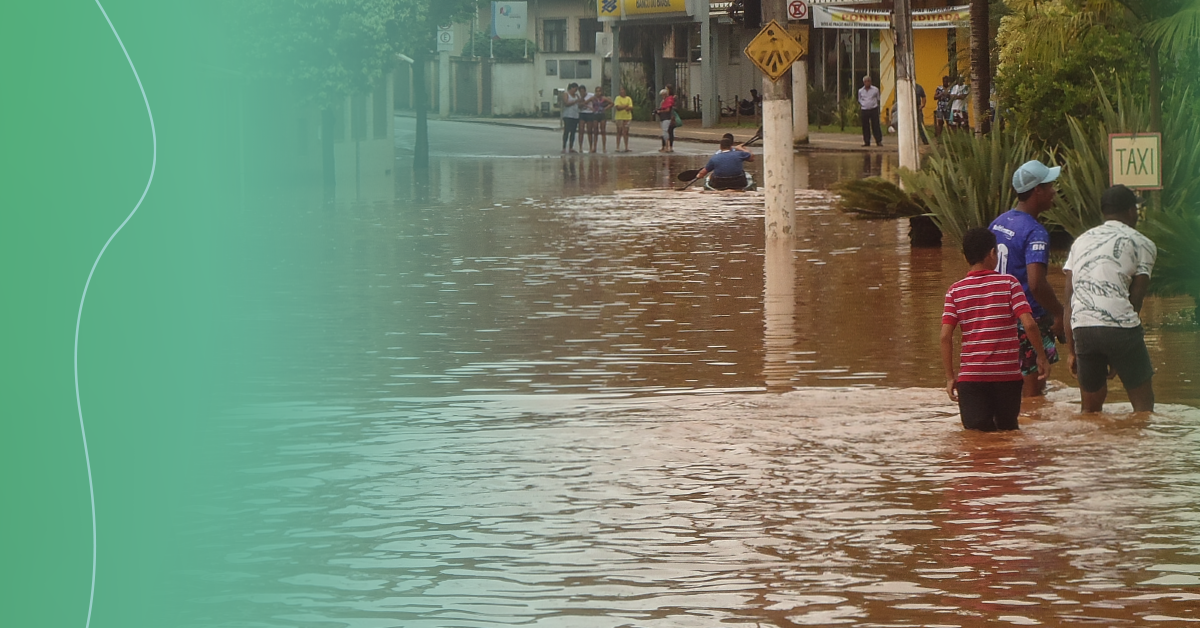Temperatures in the month of July 2023 soared higher than they ever have in 174 years of climate records, the result of a decades-long trend of rising temperatures. These extreme temperatures are a glimpse of the glaring fact: The impact of climate change is real, now, and it no longer is a “future” problem. Climate change is no longer a potential or theoretical risk. It has already arrived. And we have to respond.
In recent months, I have witnessed first-hand the impact of climate change on health and the generation of responses to address it. The first was a meeting about the construction of a new hospital in Central America, in which the key question was whether the site where it was to be built had been altered by the two mega-storms in 2021: ETA and IOTA. The main concern was not that the building might get damaged but rather could it continue providing services in the case of similar storms in the future.
The second experience occurred during a mission to Ecuador, where there is growing concern about the potential impact of El Niño, predicted to be intense in 2023–2024 with the potential to cause the GDP to fall by an estimated 10% (CEPAL 1998). A wide array of potential health problems could arise related to this phenomenon, from the impact on people’s physical & mental health to the emergency responses and finally the resuming of services once the emergency is over.
Emergency preparedness: How to respond to what is urgent and what is important
The probability of a “Mega El Niño” is close to 90% and is creating growing concerns that differ in the hemispheres. In the Southern Hemisphere, the main concern is extreme precipitation, heavy rains that can cause record-breaking flooding, landslides, and destruction of agricultural crops, among other problems. In the Northern Hemisphere, the main fear is drought and how it can cause significant damage to agroindustry, as well as for subsistence farmers such as the MILPAS.
Responses to these scenarios may vary, but there is a common thread: How to keep the population safe and healthy. In the most fragile areas where climate impacts are predicted to be extreme, the priority will be on ensuring food security, especially for vulnerable populations. In all cases, work must be done on health surveillance, emergency response and strengthening of ongoing programs.
The key shift in our understanding is that: Emergency responses must be an integral part of the system; they are no longer temporary. For example, if it is important to ensure reliable supply of medications during emergencies; the current system is weak, however, so the actions taken in an emergency will probably also be equally weak, since the first response is based on the installed capacity pre-emergency. A chain is only as strong as its weakest link.
We must keep adapting our responses to rapidly changing situations. To this end, we rely on tools that are useful not only for climate-change-related problems but also for a wide range of public health problems. For example, functioning health systems rely on robust surveillance systems that enable identification of problems in the community and help guide our first responses. In this new scenario, the monitoring parameters of surveillance should include determination of climate-change-associated factors (heat stress, for example) and connect these issues in real time to the climate patterns.
Relevant information also needs to be translated into action; for example, public announcements so everyone is prepared for a heat wave as well as support in place for vulnerable groups (i.e., older people who live alone, etc.). This may appear obvious, but in many LAC countries there may be public announcements about heat waves, but they do not include explicit information on what precautions to take.
We must begin immediately to work on emergency-response preparedness by strengthening and / or creating intersectoral emergency systems, identifying and working with vulnerable groups and communities (in areas affected by landslides for example), and establishing channels and strategies for reliable communication within the community. When alerts are sounded from the epidemiological and climate surveillance systems, the necessary responses from the health sector — and other key sectors — will in place to be activated.

Addressing climate change from a health perspective
Although the carbon footprint of the health system is not large, it still can be reduced and prevented from expansion. The best-known interventions include improvements in buildings to reduce energy and water use. However, this represents only 25% of the health sector’s carbon footprint. The largest part (75%) is related to the functioning of the health system itself, which can be reduced by committing to measures that improve the logistics management of materials; reducing unnecessary consumption of medicines and diagnostic tests; and implementation of digital health services to reduce transportation of patients, companies and staff. All these measures not only help to reduce the carbon footprint but also to improve the efficiency of the health system.
It is also essential to optimize processes, resources and available systems through improved governance, which will allow us to “connect the dots” that are unconnected. For example, when a heat wave is forecast, basic information can be provided on hydration and protection from the sun. A design be can developed for multi-threat emergency systems able to respond to climate crises, pandemics, and any other crises that may arise. The actions we take today will determine the effect of climate change on both current and future generations. Many of these changes will take decades to implement, so it is urgent to start today.
We all can and must participate in addressing climate change. The IDB seeks to contribute to the health response through green investment projects, evidence and practical recommendations. Many of these recommendations are available in our recent document: Health and Climate Change: How do we protect people’s health in the climate crisis? We invite you to read it and comment!


Leave a Reply